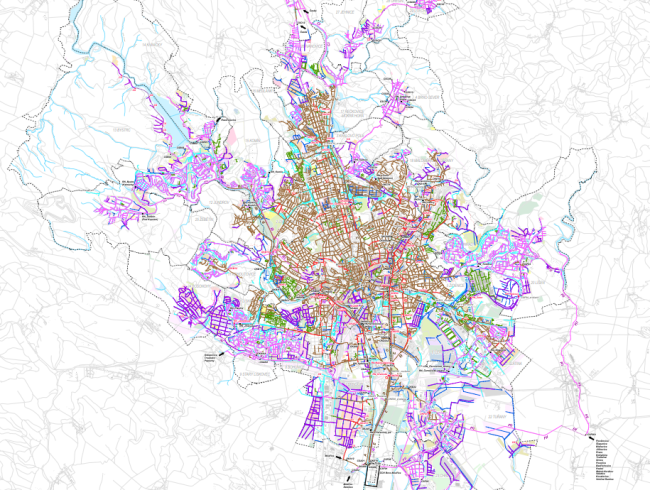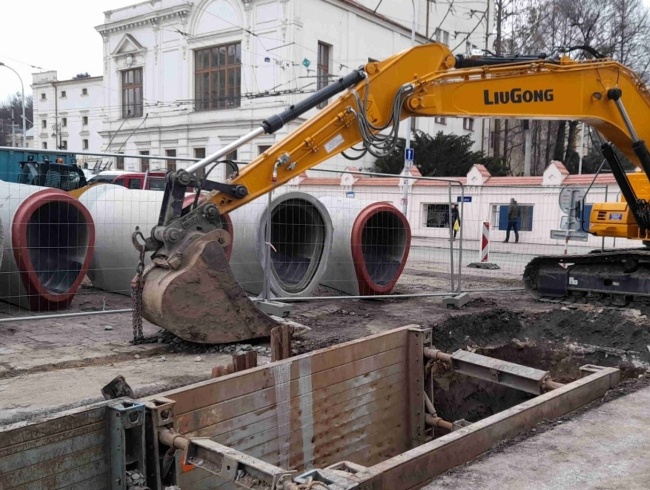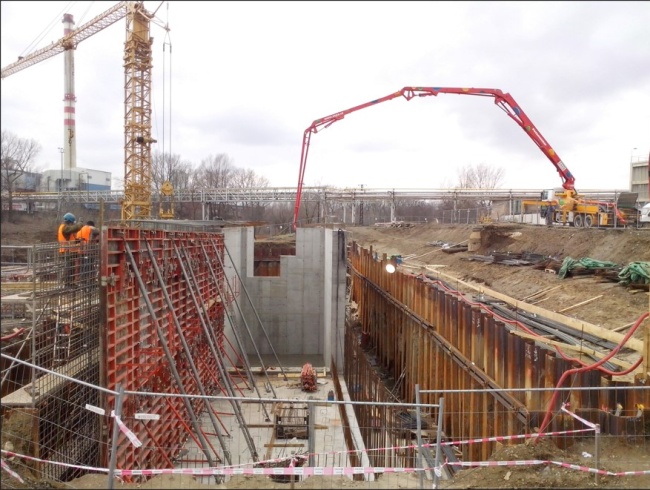Slavnostní zahájení významného investičního projektu – „Kalové hospodářství ČOV Brno – Modřice“
Sewerage system
Sewerage system, which includes facilities for the collection and drainage of wastewater and rain water from housing estates, industrial and agricultural operations, is one of the core business activities of the company AQUATIS a.s.
The preparation of sewerage structures is conditioned by necessary surveys: geodetic, hydrological, engineering-geological, hydrogeological and chemical-technological survey.
The preparation of sewerage structures is conditioned by necessary surveys: geodetic, hydrological, engineering-geological, hydrogeological and chemical-technological survey.
Sewerage - combined, separate and modified systems. Sewerage for sanitary sewage, rainwater, industrial wastewater etc.
Gravity, pressurized, vacuum and combined sewerage systems. Laying of sewers in collectors.
Sizing of sewers, their lay-out, material, laying, relation to the receiving body of water.
Method of implementation - open trenches, tunnelling, shield tunnelling.
Sewerage facilities Shafts of all types and sizes, metering shafts, overflow chambers, outlets, inverted siphons, underpasses under railways and roads, pumping stations of all sizes and types.
Works related to refurbishment Reconstruction of existing networks using all the technologies employed today, network refurbishment using trenchless technologies.
Urban engineering
Due to its natural nature, water engineering has for ages used underground spaces mainly to convey water. Currently, water-related and other facilities (hydroelectric power plants, wastewater treatment plants, protective structures for underground pipelines, etc.) are placed underground. This is the reason why AQUATIS a.s. pays great attention to this demanding engineering specialization.
Despite holding the authorization to engineer project implemented using mining methods according to Act ČNR No. 61/1988 Coll., as amended by Act ČNR No. 542/1991 Coll., AQUATIS a.s. cooperates in this field with relevant research institutes and universities.
Galleries conducting water, for surveying and communication purposes.
Tunnels for drinking water, service water and wastewater, such as conduits and waste from hydroelectric plants, for transport and access.
Manholes as balancing chambers on pressurised conduits and wastewater pipes as well as providing access to cavities and collectors.
Pits for machine rooms of hydroelectric power plants, wastewater treatment plants, for storing waste, etc.
Collectors for placing water supply mains, energy and information transmission lines in areas of concentrated development (in city centers, under roads).
Methods employed to construct underground facilities engineered and:
• constructed according to the principles of the new Austrian tunnelling method;
• constructions carried out using mechanized tunnelling shields;
• conventional tunnelling using mining methods;
•construction carried out in excavated pits.



